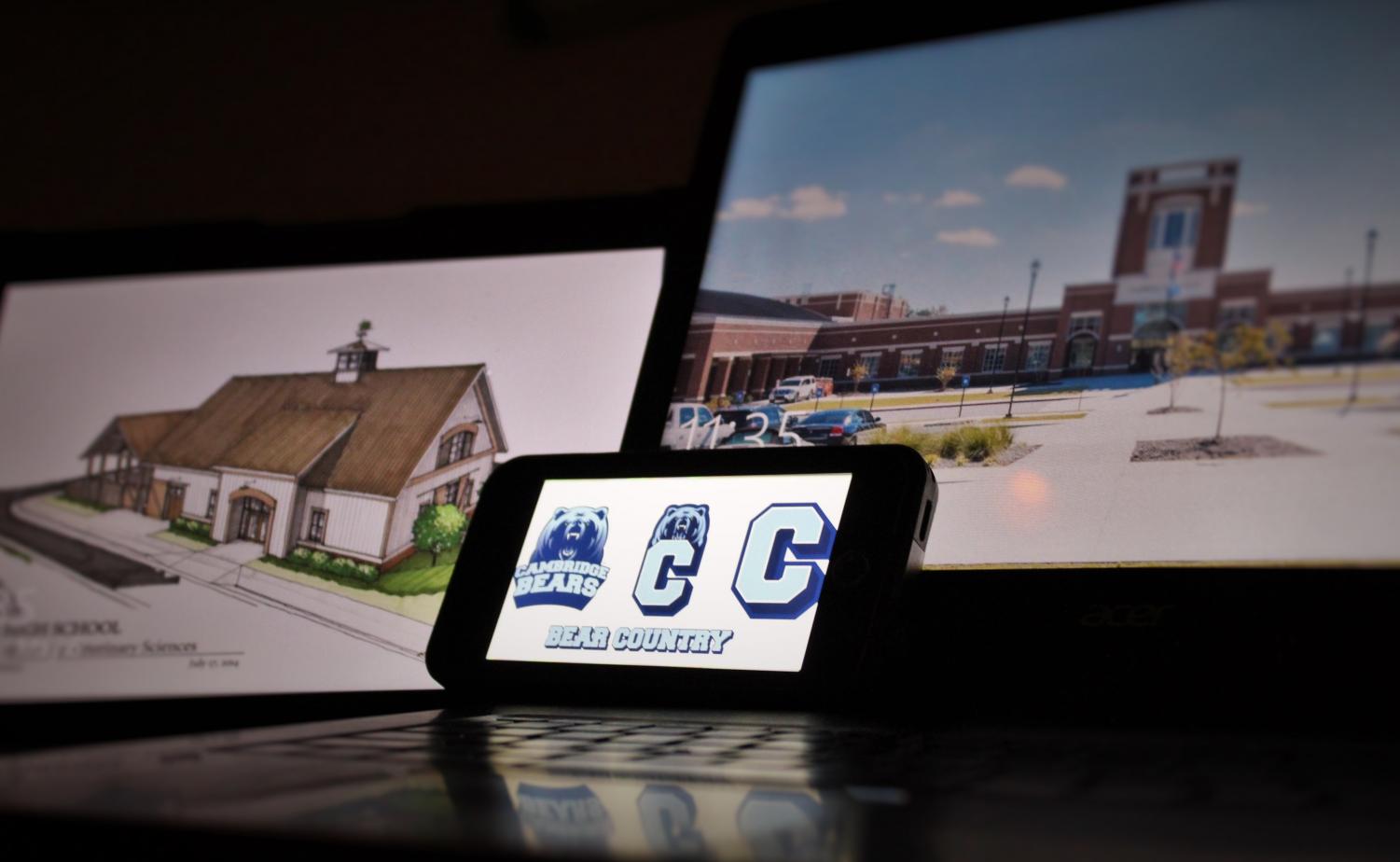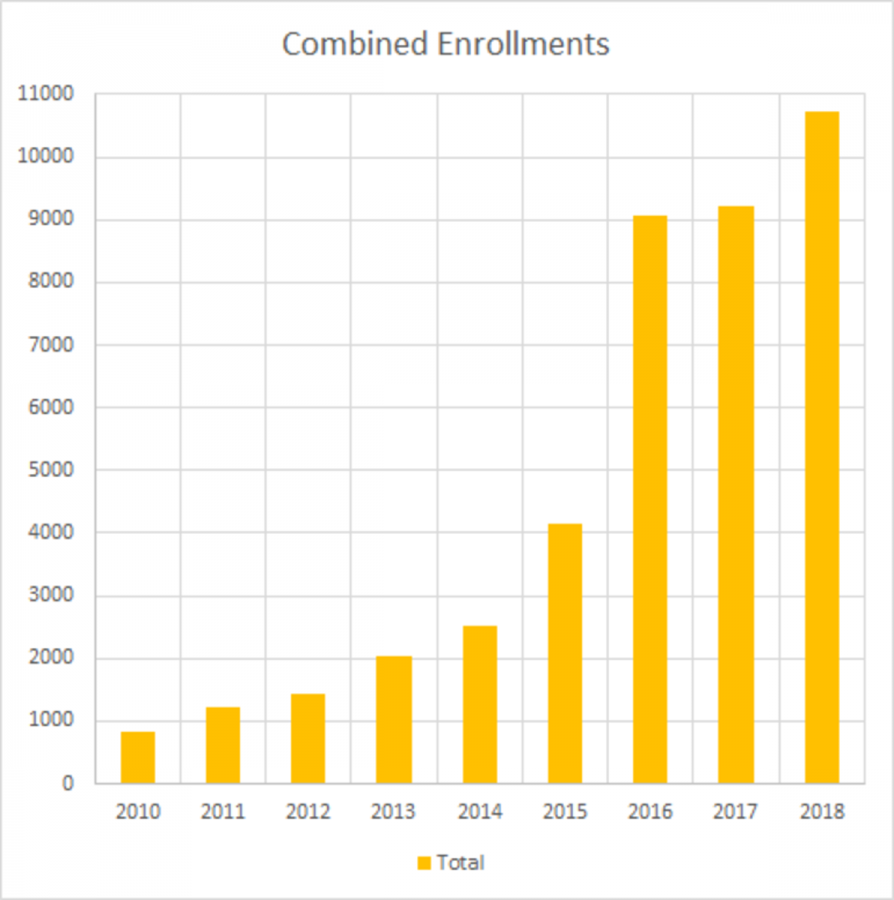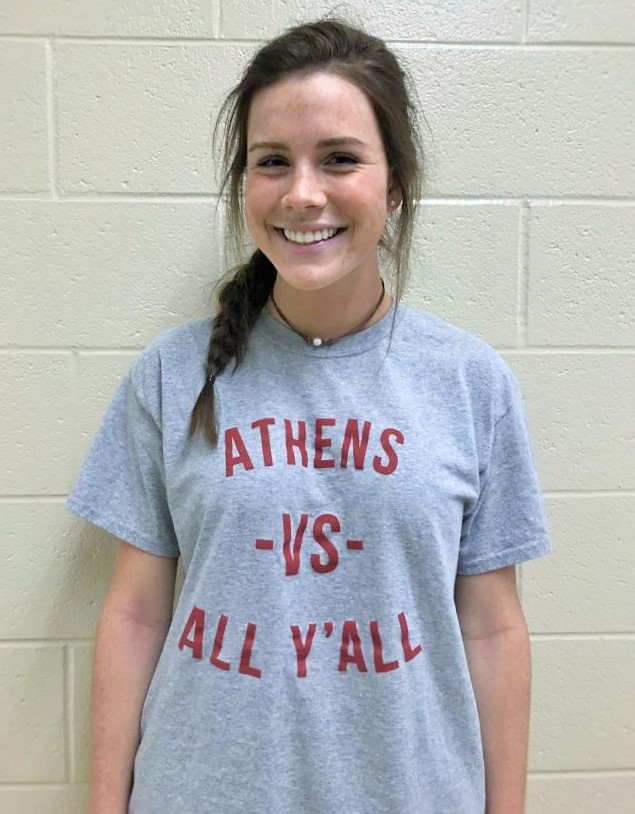Day 2: Technology & The Cambridge Experience
DAY 2 of our enterprise story, "The New Normal: How Technology is Changing the Cambridge Experience"
May 14, 2018
Dear readers,
This year, when the editors and I sat down to talk about what to write an enterprise story on, we realized just how many of our ideas revolved around technology.
Technology has become ingrained in everyday life, and, consequently, it has become just as prevalent and influential within schools.
After we got to talking, the editors and I realized that there were a number of facets of the high school experience that had been shifted one way or another by technology integration, whether that be a change in social interaction and relationships, career readiness, quality of learning, or anything else.
Because of this, we saw that it would be fitting to write a whole series of stories surrounding the question of how technology has influenced the formation of the modern high school experience, more specifically, here at Cambridge.
We hope these stories serve not only to educate people about technology’s new place in schools, but to draw attention to both its intended and unintended effects.
Thank you,
Greer Spradling
Editor-in-Chief of The Bear Witness
Part 3: “An Educational Reboot”: How Technology is Changing the Quality of Learning
The number of online enrollments has skyrocketed from previous years.The number of online enrollments has skyrocketed from previous years, as evident by both graphs.
With options like online classes, personal devices and school-related apps on students’ phones, education is the most accessible it has ever been for students and teachers of the modern era.
Students can now access courses and classroom materials at any time, view topics in a variety of ways and take their work with them wherever they go.
And the advent of online classes has opened up an entirely new world of opportunities and challenges to students, and drastically changed the landscape of what classes look like.
However, the question remains of how much students benefit from this style of education versus a traditional classroom setting. How well can students retain and comprehend information when learning from a screen?
According to Fulton County’s Coordinator of Virtual Learning Tim Maley, the county’s aim in creating these courses is also based on flexibility and student-centered learning.
“A student can move at a rate that fits their academic needs,” he said. “The teacher is not worried about what they’re broadcasting to a classroom of students. They’re providing very tailored support to an individual.”
This model has proven to be popular.
“We went from about 100 enrollments a term [in 2015] to 3700 a term,” he said.

Maley said End-of-Course (EOC) test scores display no significant difference between those who take online classes versus the traditional, face-to-face classroom model.
“We see no statistically significant difference in outcomes measured by those standardized tests,” he said.
However, not all teachers agree with this, and cite their own experiences with virtual learning to illustrate the difference between online and traditional courses.
“In the case of the AP US history exam, I have not seen an online student pass the exam yet,” said history teacher Lauren Hall, who teaches an online US history class in addition to her regular AP history classes.
Maley also illustrated the point that not all students share the same learning style.
“Different students will define quality differently,” he said.
This is a point upon which both advocates and opponents of online learning can agree.
Even though some students find online classes to be more appealing due to the flexibility and course offerings, Hall said they need to consider their own personal learning styles when determining if online learning is right for them.
Some students, like sophomore Rachel Kang, who has taken Latin, health and physical education online, prefer in-person classes.
“When it’s on a computer or through a screen, I’m not as motivated to understand the material,” said Kang.
For others, however, online classes offer accessibility that in-person ones do not.
“I’m dyslexic and I took sign language, which is a lot easier than French or Spanish,” said sophomore Mason Fletcher, noting how the abundance of online classes can be especially helpful for students with learning disabilities.
This variety of online classes can also cater to students interested in subjects not offered in the school building.
“[Taking online classes] gave me an opportunity to take classes that I would not have been able to do through the seven periods you’re allowed at school,” said Kang.
In addition to the opportunities offered by online class offerings, teachers now have new ways of explaining topics and getting assignments to students. Technological resources, especially apps such as Google Classroom or Remind, can help both teachers and students keep up with assignments.
Chemistry teacher Dahlia Restler, who is in her 20th year of teaching, said she uses Google Classroom daily to keep students up to date.
She said Google Classroom is a good tool because “it’s easy, I don’t have to make my own website.”
But even with the increased presence of technology within the classroom, Restler has observed that her students’ performance levels have not changed much.
“Technology is just a tool; it doesn’t stop the teacher from still needing to explain or teach. Technology isn’t teaching for me, it’s just like an added tool,” she said.
The availability of new technology to aid learning — whether that means taking an online class or doing your work on a computer — has undoubtedly changed how students learn.
“It’s not the kind of instruction that’s provided, but the quality of the instruction itself,” said Maley.
A Sense of Community and More: Why Technology Shouldn’t Alter the High School Experience
OPINION: Our second guest column out of three to come.
Today’s high school students around the country have the opportunity to attend school via the internet through online classes.
There are seniors who are fully enrolled in online courses and never step foot inside of a school building, juniors who take AP and honors level classes on their laptops, and underclassmen who never have to wake up at the break of dawn for their first period classes.
Online classes may benefit students who work or play competitive sports, but attendance and participation in school-sanctioned events, held before and after school, are dwindling.
Bleachers at pep rallies are abandoned by students who have already been dismissed early from school, and grade levels are losing their bond by the time they walk across the stage at graduation.
While the flexibility of online learning is appealing to many students, the downside is the loss in value of the face-to-face social interactions and experiences of students and teachers.
The flexibility of online classes is helpful, considering the convoluted demands of being a high school student with respect to work, sports, personal commitments, and college applications.
While taking a few online classes may be helpful with scheduling, taking too many of them opens the door to the loss of many valuable experiences high school students need to grow and learn.
Although technology engages all types of learners at various paces, it also means many students skip the high school rite of passage.
I support teachers allowing students to whip out their phones for a game of Kahoot or taking notes on Surfaces, but advances in learning technology via online classes are taking a toll on school spirit and participation.
Speaking of which, Cambridge held its first-ever senior class picnic on May 3.
Seniors were provided a free lunch by BurgerFi while enjoying a sunny day out on the field. They even had the chance to de-stress by jumping in bouncy houses.
As word about the event spread, I overheard many seniors acknowledge the fun nature of the event, but then explain that they would not be attending because they normally leave school before the early picnic dismissal.
(Not even the free food was worth coming back for.)
My concern is that for many students who take multiple online classes, there is a lack of connection or belonging to their class or school, as well as their desire to be a part of the school community, and I think it’s sad.
I may be old-fashioned, but I believe in the value of making the most of the high school experience, and that includes supporting and participating in school-sanctioned events.
Who knows what the future will bring for high school students in terms of technology?
I just hope that students realize the positive value of being a part of the school community, especially one as wonderful as Cambridge.
Amelia Green is the Senior Class President for the 2017-2018 school year.


